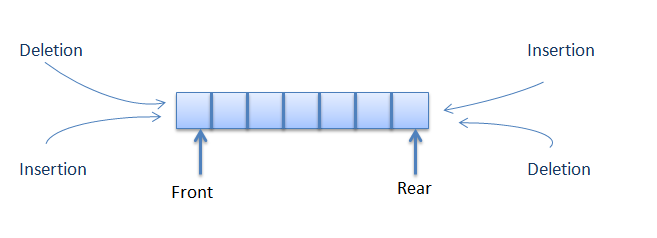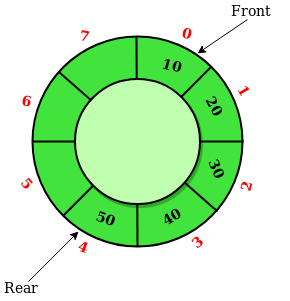Stacks
Concept

A linear
data structure implemented by either an array or a linked list. The array is
follows the LIFO (Last In First Out) rule set. As a result the last data that
was put into the array is also the first data that gets taken out first. A
stack uses 2 important variables.
Max -> Represents the maximum data that can be stored.
Top -> Represents the most recent data.
Max -> Represents the maximum data that can be stored.
Top -> Represents the most recent data.
Queue
Concept

A linear data structure where elements can only be inserted from the bottom and used from the top. This concept follows the FIFO (First In First Out) rule set.
Circular
Queue
In a circular
queue the start of the queue connects to the end of the queue thus creating a
circular pattern in which the elements are rotated upon.
Infix,
Prefix, Postfix
Infix, prefix and postfix are three different but equivalent ways of writing expressions.
Infix, prefix and postfix are three different but equivalent ways of writing expressions.

Infix = Operators are written in-between their operands. ( X + Y )
Prefix = Operators are written before their operands ( + X Y )
Postfix = Operators are written after their operands. ( X Y + )
Depth
First Search (DFS)
Depth First
Search is an algorithm used for searching within a tree or graph formed data
structure. The algorithm starts at the root node and explores as far as
possible along each branch before backtracking
Breadth
First Search (BFS)
Breadth First Search is an algorithm used for searching within a tree or graph formed data structure. The algorithm starts at the tree root and explores all of the neighbor nodes at the present depth prior to moving on to the nodes at the next depth level.
Breadth First Search is an algorithm used for searching within a tree or graph formed data structure. The algorithm starts at the tree root and explores all of the neighbor nodes at the present depth prior to moving on to the nodes at the next depth level.
Breath First
Search uses the opposite strategy as DFS. In DFS it explores the node branch as
far as possible before backtracking and then expanding to other nodes.

No comments:
Post a Comment